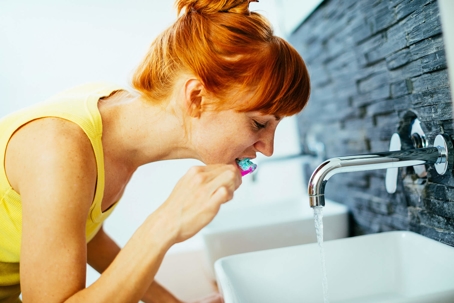No one wants an enormous water bill, but figuring out how to save water can be challenging, especially in a busy household! The best place to start is to identify where water waste is happening.
Here are some of the most common ways that water goes to waste in a typical household.
1. “Small” faucet and showerhead leaks are ignored
When it seems like there are a dozen things to take care of around the house, a dripping faucet usually ends up at the bottom of the priority list. However, small leaks can result in significant water waste over time. For instance, if you have just 1 faucet that drips once every 2 seconds, that faucet alone will waste over 1,040 gallons in just one year!
This simple drip calculator can crunch the numbers for you to determine just how much water waste will result from a “small” leak.
2. Water is left running
We all tend to leave the water running more often than we realize:
- When brushing our teeth (kids tend to be the biggest culprits behind this one)
- When washing dishes
- When waiting for the shower to heat up—you only mean to be away for a moment, but how much time actually passes?
While these habits can be corrected, this doesn’t change the fact that the water still needs to run sometimes. By upgrading each of your faucets with an aerator, you can reduce their water flow while still getting satisfying water pressure.
3. Landscaping is watered incorrectly
It’s best to water your plants and lawn in the morning or evening. This will reduce the amount of water that evaporates (goes to waste). Although different plants have unique watering needs, many thrive with deep, infrequent watering, which allows the water to penetrate the soil (instead of rolling over it) and reach the plants’ roots.
4. Relying on outdated, inefficient plumbing fixtures
We’re all familiar with the phrase, “If it ain’t broke, don’t fix it.” When it comes to saving water, sticking to that advice can result in some pretty hefty utility bills. Just because a faucet or toilet still “works” doesn’t mean it’s operating efficiently.
Here’s an approximation of just how much water you could save by upgrading to some WaterSense-labeled plumbing fixtures, which are designed to save water while performing as well or better than standard models:
- An old, inefficient toilet can use as many as 6 gallons per flush. A WaterSense-labeled toilet uses 1.28 gallons per flush or less.
- Standard showerheads use 2.5 gallons of water per minute (gpm). WaterSense-labeled showerheads use no more than 2.0 gpm. In one year, this could save your family 2,700 gallons.
Count on our expert technicians at Quality Plumbing, Heating, Cooling & Electrical for top-quality plumbing repairs and installations for your Morristown home: (865) 622-7785.

